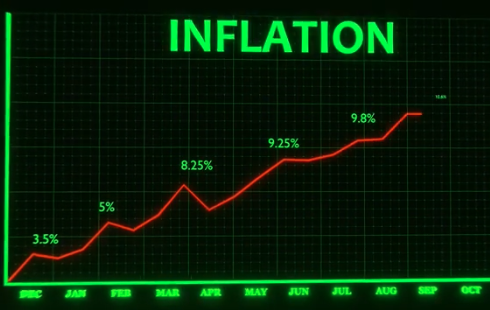The Great Inflation Manipulation
Starting in the 1980s, our government began changing how they calculate inflation. These weren’t minor tweaks—they were fundamental alterations that dramatically lowered the reported rate. If you visit ShadowStats.com, you’ll find alternative inflation measurements based on the methodology used before these changes. The difference is shocking. While official reports show inflation hovering between 0-5% since the 1990s, the actual rate using the original methodology has been between 5-10%. Today, that gap has widened to about 8%. The government reports 2.5%, while the real rate is likely closer to 10%. Even if you’re skeptical of these alternative measurements, consider this: if inflation were truly just 3% annually, prices would double roughly every 24 years (using the Rule of 72). But has that been your experience? My personal example tells a different story. The starter home I bought in 2002 for $116,000 is now worth about $400,000. That’s not double—it’s more than triple! This suggests an actual inflation rate between 5.5-6% just on real estate alone.Why This Matters For Your Financial Future
As a former financial advisor, I used to run retirement projections for clients. Here’s what most advisors won’t tell you: the inflation rate they use in their calculations dramatically affects how your future looks. Let me show you how this works with a simple example:- Starting with $100,000
- Adding $10,000 annually for 30 years
- Earning 8% returns (which is actually generous for typical investments)
- With 2% inflation (what advisors often use): Your future purchasing power is about $1.23 million
- With 5% inflation (more realistic): Your purchasing power drops to just $515,000
- With 7% inflation: You’re down to $292,000
- With 8% inflation: A mere $221,000
The Money Supply Problem
Despite claims that inflation is under control, the Federal Reserve’s actions tell a different story. Looking at the M2 money supply chart, we see a massive increase after 2020. While there was a brief decline in 2022, it’s now trending upward again. Why would the Fed pump more money into the system if everything is fine? Their actions speak louder than their words, suggesting they see weakness in the economy that they’re not publicly acknowledging. More money in the system means more inflation. It’s that simple.What You Can Do About It
The traditional approach of “set it and forget it” investing no longer works in this environment. You cannot rely on vanilla mutual funds with high risk and mediocre returns to outpace real inflation. You need passive income streams that significantly exceed the real inflation rate. This means looking beyond conventional investments to assets that can generate cash flow now, not just decades in the future. For your financial future to be secure, your returns must far exceed inflation. If inflation is truly 8-10%, then your investments need to be doing at least that well just to maintain your purchasing power—and much better if you want to actually grow your wealth. The first step is acknowledging the truth about inflation. Once you accept that the official numbers are misleading, you can make more informed decisions about how to protect and grow your wealth in this challenging environment.Frequently Asked Questions
Q: Why would the government underreport inflation rates?
There are several reasons. Lower reported inflation means smaller cost-of-living adjustments for Social Security and other benefits, saving the government money. It also makes economic performance look better than it is, which benefits politicians. Additionally, it helps keep interest rates lower, which reduces government borrowing costs on the national debt.
Q: How can I calculate my personal inflation rate?
Track your major expenses over time, particularly housing, food, healthcare, and transportation. Compare what you paid for these items 5-10 years ago versus today. Calculate the annual percentage increase. Most people find their personal inflation rate is much higher than the official CPI, especially if they live in high-cost areas or have significant healthcare expenses.
Q: What investments tend to perform well during high inflation?
Assets that generate cash flow and have intrinsic value often perform better during inflation. These include income-producing real estate, certain commodities, businesses with pricing power, and some alternative investments. Traditional fixed-income investments like bonds typically perform poorly during high inflation periods.
Q: If inflation is really 8-10%, why don’t more economists acknowledge this?
Many mainstream economists rely on government data and methodology. Their careers and reputations are built around these official metrics. Additionally, acknowledging much higher inflation would raise uncomfortable questions about monetary policy and economic management. Some independent economists do recognize and discuss the limitations of official inflation measurements, but they receive less attention in mainstream financial media.







